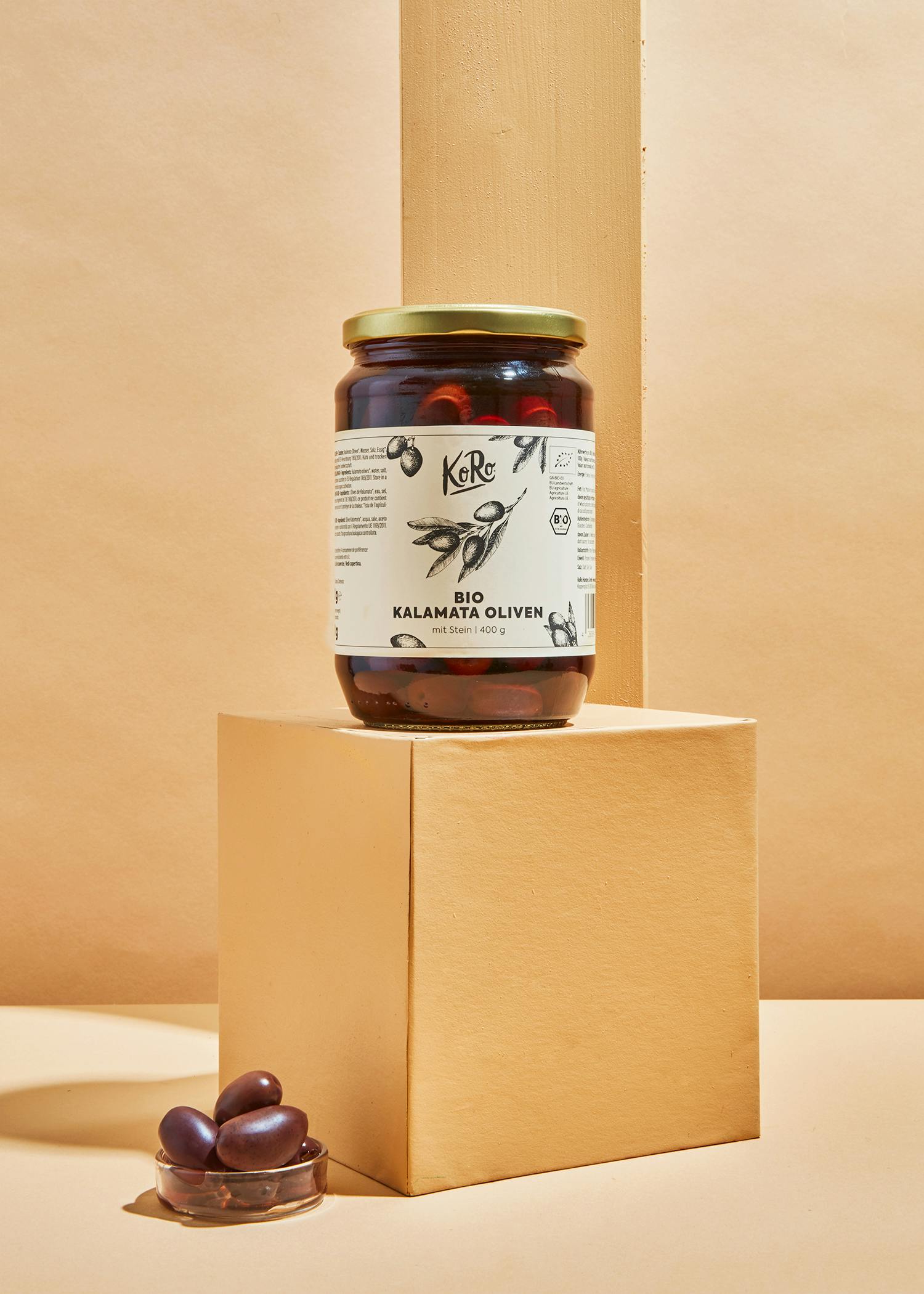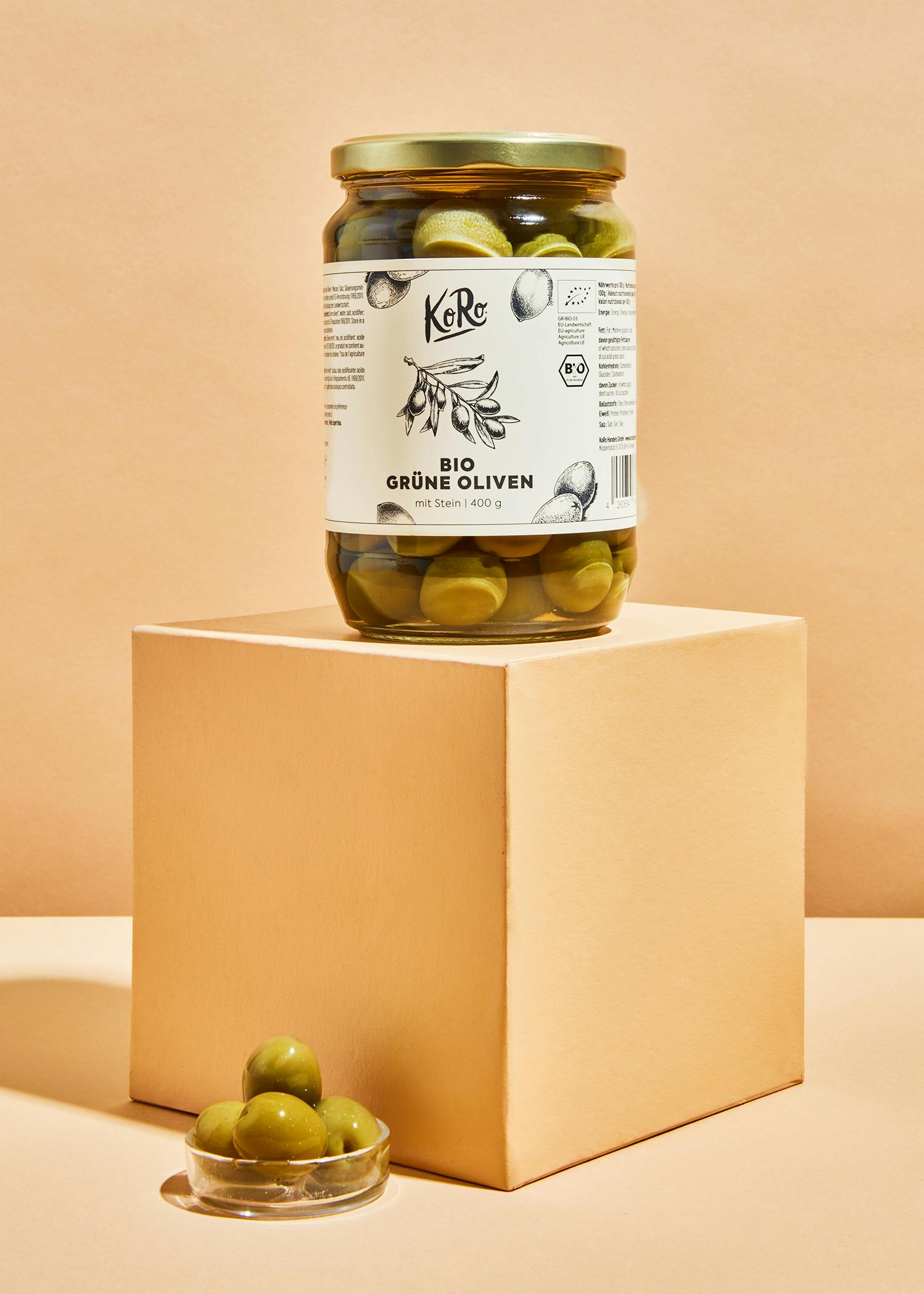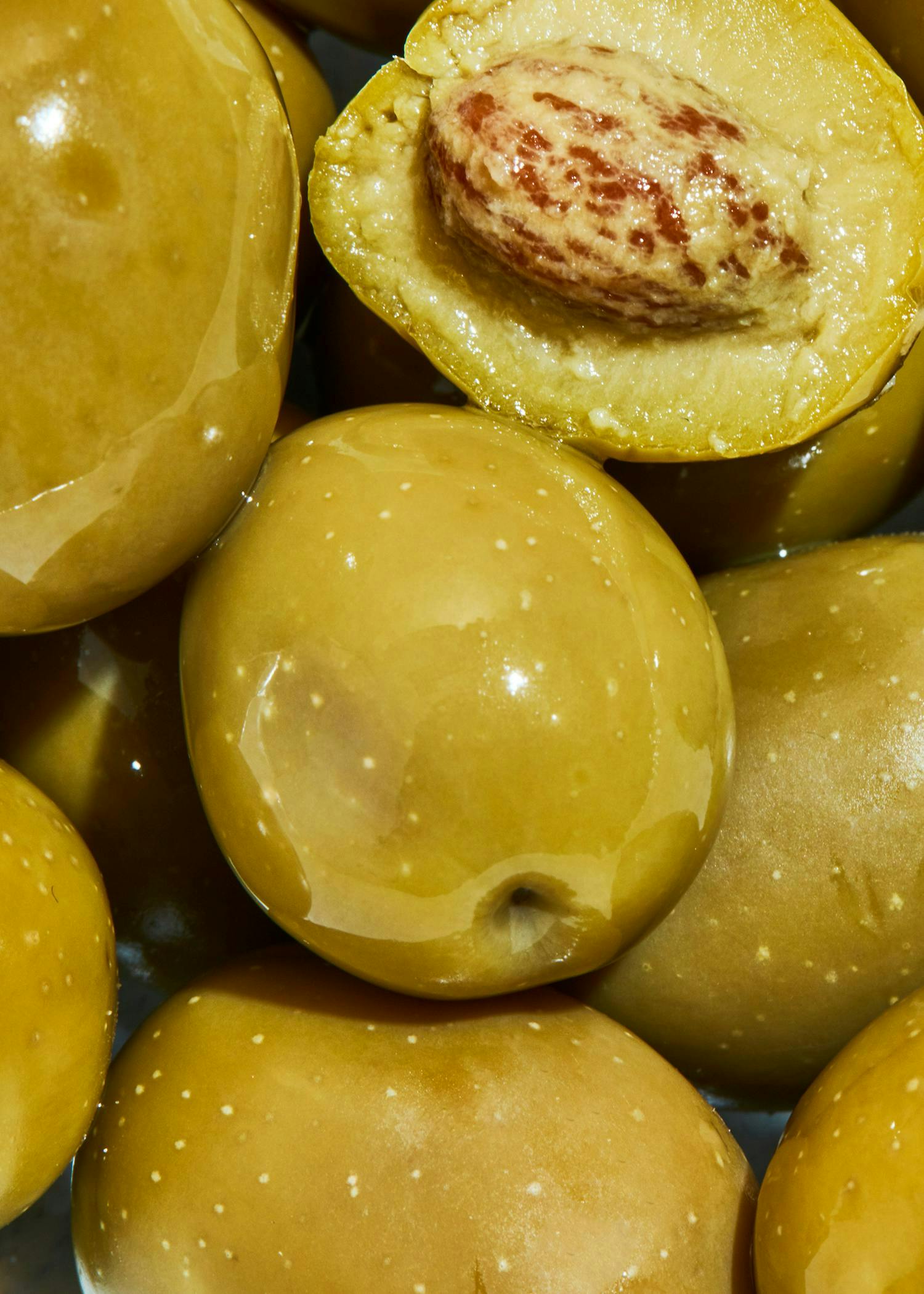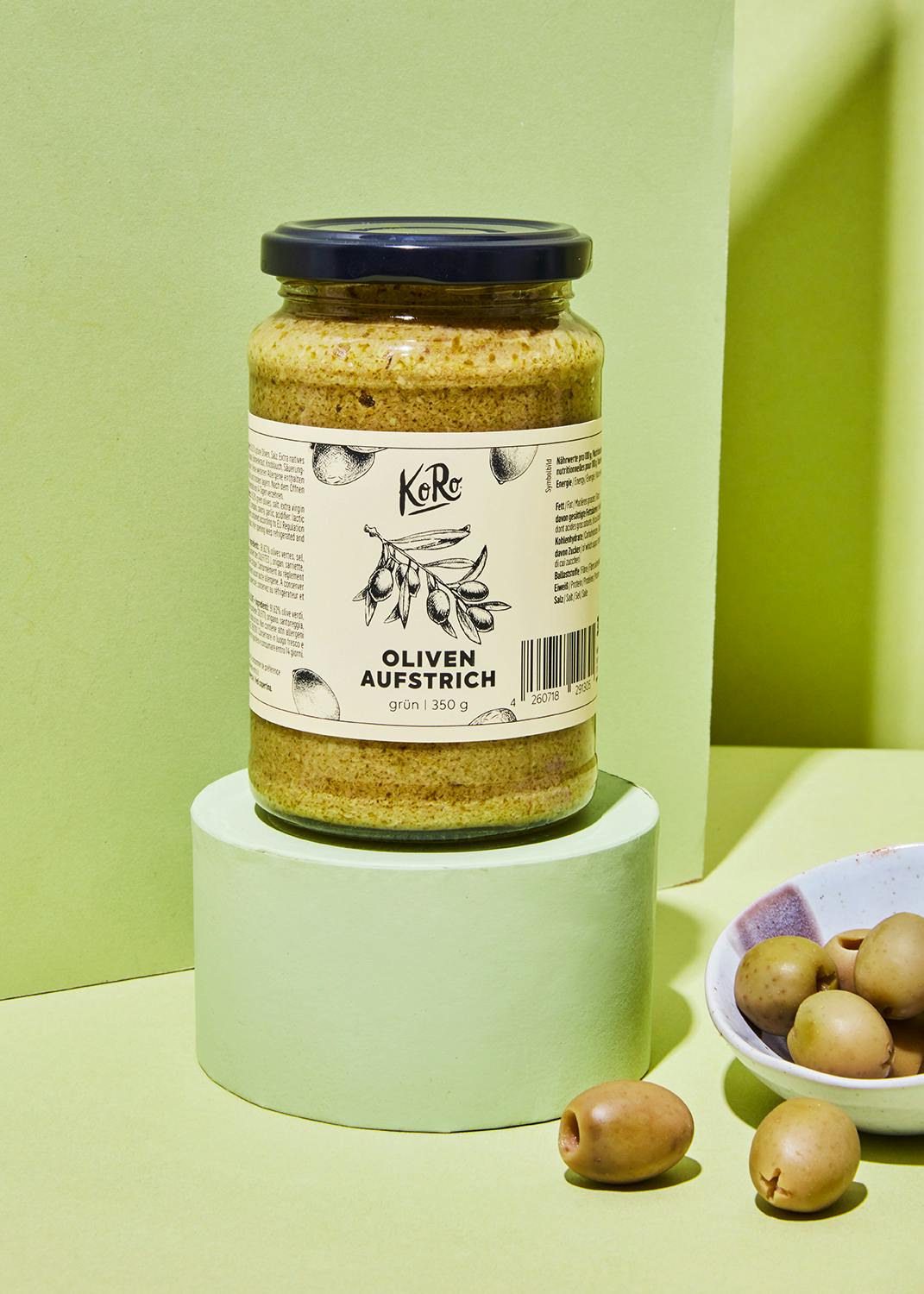Olives, naturally!
Olives are mainly grown in Greece, Italy, Spain, Turkey and Morocco, mostly in so-called olive groves. These are gardens full of olive trees, some of which are around 1000 years old. The color of young olives is green, and the darker they are, the riper they are. In between, however, all colors are possible: from yellow, light and dark brown to purple. Not only do they look pretty, but their inner values are particularly impressive: olives have vitamins A and E as well as magnesium, potassium and sodium and a good fatty acid profile thanks to monounsaturated fatty acids and polyphenols.
Olives are grown either for direct consumption, i.e. as table olives, or for oil production. But which olive is suitable for what? This is determined by the olive's flavor profile. Greek Kalamata olives, for example, are dark olive and not suitable for oil production as they are too bitter. To remove the bitter substances, the olives are first soaked in brine and then in vinegar. They are then stored in either brine or oil until they find their way onto your plate or into your martini glass.
Green gold
Olive oil is an essential ingredient in every kitchen - especially in the Mediterranean. But how do you get the oil? The olives are washed and blended into a paste, including the pits. They are not separated according to their color and therefore their degree of ripeness, but the oil is pressed from olives of all ripeness levels. The pulp ferments briefly in oxygen before the light green oil is pressed out of it.
As olive oil does not like light, oxygen or heat, it is stored in canisters, green or amber glass so that less sunlight hits the oil. So if you store it sealed in a less sunny place, you have already protected it from two culprits. Incidentally, olive oil also contains its very own preservatives, polyphenols. The higher the concentration of polyphenols, the less quickly it goes rancid. And what about heat? Olive oil has a smoke point of 180 degrees Celsius. This means that it should ideally not be heated above this temperature, otherwise it will start to form smoke. At this point, the content of vitamins and minerals can decrease. Of course, you can still cook all kinds of tasty treats with olive oil, just not too hot, otherwise the health-promoting fatty acids will be destroyed. Instead, fry with rapeseed oil and use your olive oil for seasoning, or pour it over cold dishes such as salads.
Who's who of olive oils
POV: The next cooking evening is coming up and you want to buy a good olive oil as well as olives for snacking. But somehow you're not sure what all the names on the oil bottles mean. No worries, we'll show you the way to the right liquid gold!
- Cold-pressed: This means that the oil is pressed at below 28 degrees Celsius. The process is also known as cold extraction.
- Extra virgin: Cold extraction preserves the antioxidants and polyphenols contained in the olives. Extra virgin olive oil also contains the most unsaturated fatty acids, as they have not been destroyed during pressing or storage. It therefore contains more nutrients, but the oil also has a shorter shelf life.
- Virgin olive oil: This oil has a slightly higher acidity but less intense flavor than extra virgin olive oil, but is still considered a high-quality cooking oil. It also has a slightly longer shelf life.
Can't get enough of olives? We feel you! That's why we've snacked our way through the best olives in Greece for you! Try our green and black olive spread for sauces and salads, or make yourself a sandwich with our olive tofu. And if you don't feel like cooking but have a good plate of pasta: cook your favorite pasta, heat up the tomato sauce with olives and then enjoy! And what would life be without dessert? We tested the viral trend: Vanilla ice cream with olive oil and salt and have to say - we're thrilled!







